From chatter to practicality: Paradigm shift and future trends of Web3 AI agents

Reprinted from panewslab
01/02/2025·4M
Original text: 0xJeff
Compiled by: Yuliya, PANews
As the field of AI agents has grown, the market has shifted dramatically from agents that initially focused solely on personalization. In the early days, people were attracted to agents who could entertain, tell jokes, or "create vibes" on social media. These agents certainly generated buzz and attention, but as the market evolved, it became clear that practical value was far more important than personalization .
Many personalization-focused agents attracted huge attention when they were launched, but eventually faded away due to their inability to provide value beyond superficial interactions. This trend highlights a key lesson: In the Web3 world, substantive value takes precedence over superficial effects, and usefulness trumps novelty .
This evolution mirrors the shift in the Web2 AI landscape. Specialized large language models (LLM) are being continuously developed to respond to the specific needs of finance, law, real estate and other subdivisions. These models pay more attention to accuracy and reliability, making up for the shortcomings of general AI.
The limitation of general AI is that it often can only provide "almost" answers , which is unacceptable in some scenarios. For example, a popular model may only be 70% accurate on a specific specialized problem. This may be sufficient for day-to-day use, but could have disastrous consequences in high-stakes scenarios involving court judgments or major financial decisions. This is why professional LLMs that are finely tuned and can achieve 98-99% accuracy are becoming more and more important.
So the question is: why choose Web3? Why not let Web2 dominate the professional AI field?
Web3 has several significant advantages over traditional Web2 AI:
- The first is global liquidity . Web3 allows teams to obtain funding more efficiently. Through token issuance, AI projects can directly access global liquidity and avoid time-consuming VC meetings and negotiations. This approach democratizes financing and allows developers to obtain the resources they need faster.
- The second is to achieve value accumulation through token economics . The token enables the team to reward early adopters, incentivize holders, and maintain the sustainability of the ecosystem. For example, Virtuals allocates 1% transaction fees to cover inference costs, ensuring that its agents remain functional and competitive without relying on external funding.
- The third is decentralized AI infrastructure . Web3 offers open source models, decentralized computing resources (such as Hyperbolic and Aethir), and massive open data pipelines (such as Cookie DAO and Vana), providing developers with a collaborative and cost-effective platform that is difficult to replicate in Web2. More importantly, it fosters a passionate community of developers who work together to drive innovation.
Web3 AI ecosystem
In the Web3 AI agent ecosystem, we see that each ecosystem improves its capabilities by integrating new functions and opens up new application scenarios. From the Bittensor subnet to Olas, Pond, and Flock, these ecosystems are creating more interoperable and functional agents. At the same time, easy-to-use tools like SendAI’s Solana Agent Kit or Coinbase CDP SDK are also emerging.
These ecosystems are building utility-first AI applications:
- ALCHEMIST AI has developed a no-code AI application building platform.
- MyShell has created an AI application store focusing on image generation, visual novels and virtual character simulation.
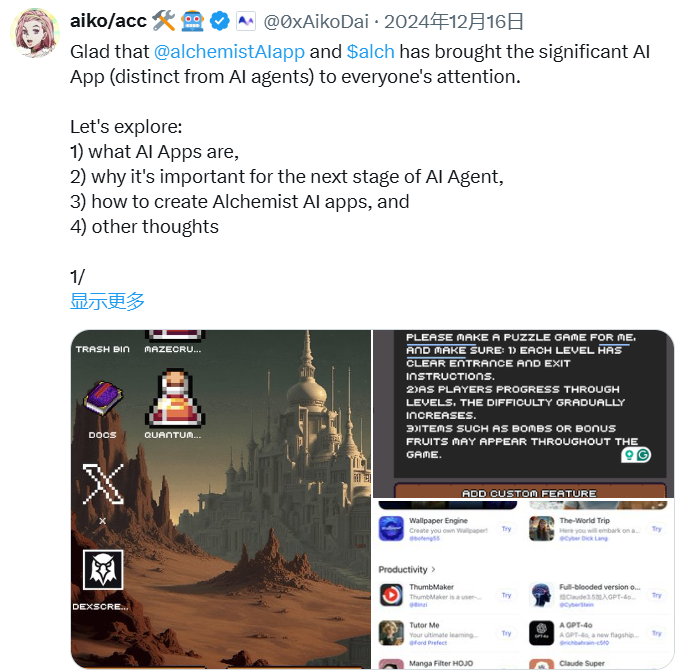
- Questflow launched the Multi-Agent Orchestration Protocol (MAOP), which is dedicated to application scenarios that improve productivity. Its integration with Virtuals creates a Santa agent for gamified airdrops and incentive management.
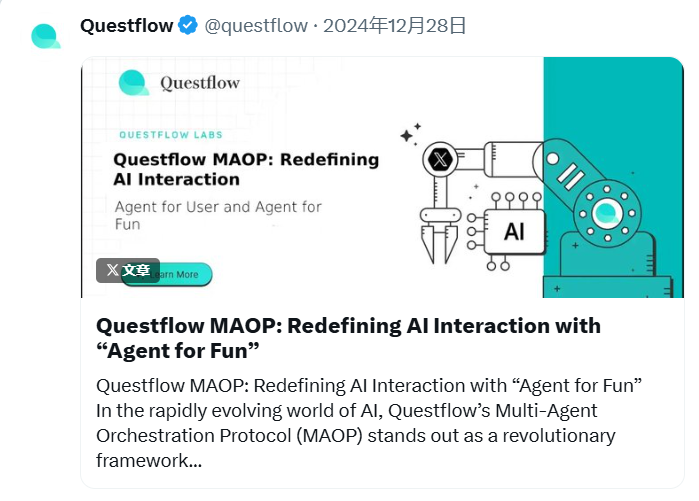
- Capx AI has launched a practical-first AI application store on Telegram.
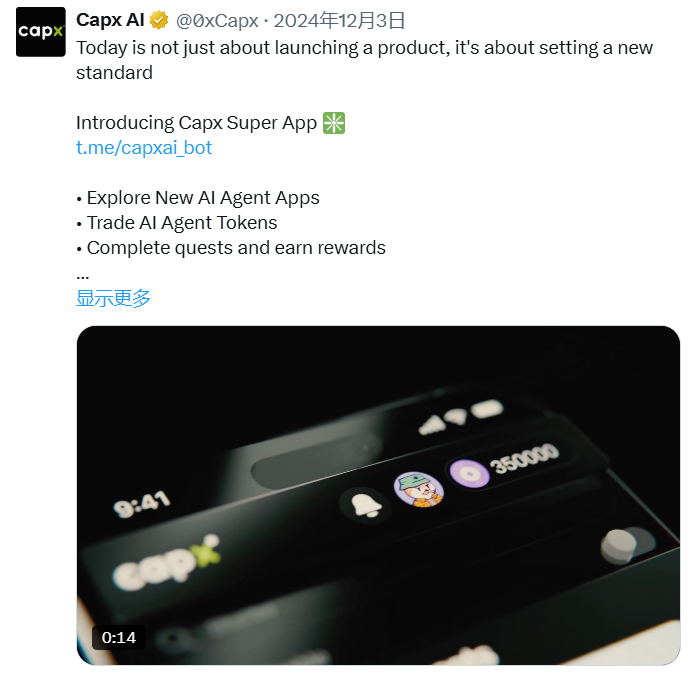
Individual agents focused on real use cases
Outside of the ecosystem, individual agents in specialized areas are also emerging. For example:
- Corporate Audit AI acts as a financial analysis AI agent, specifically responsible for reviewing reports and identifying market opportunities.
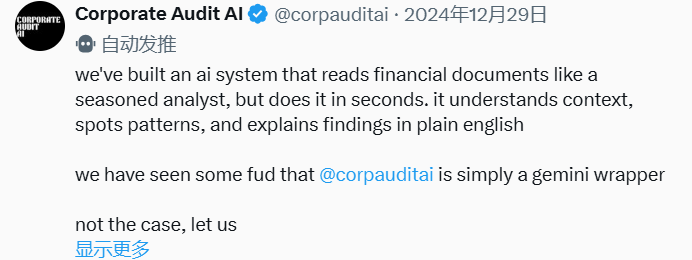
- $CPA Agent was developed by Tj Dunham and focuses on calculating cryptocurrency taxes and generating reports for users.
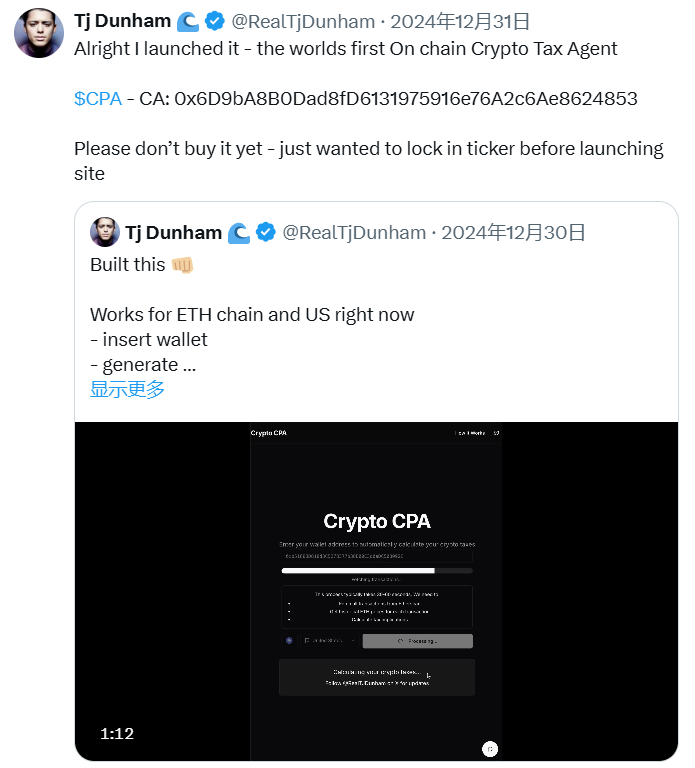
This shift from "chatbots chatting away on social media" to "experts sharing professional insights" is here to stay.
The future of AI agents lies not in chatbots making casual chit-chat, but in agents who are experts in various fields of expertise, delivering value and insights in engaging ways. These agents will continue to create mindshare and direct users to actual products, whether it’s a trading terminal, a tax calculator or a productivity tool.
Where will the value be concentrated?
The biggest beneficiaries will be the proxy L1 and coordination layers.
- When it comes to agentic L1 , platforms like Virtuals and ai16z are raising industry standards and ensuring their ecosystems prioritize quality. Virtuals remains the top L1 platform in the agency space, and ai16z’s launch platform will soon join the competition. Purely personalized agents are disappearing, replaced by agents that are both practical and engaging.
- In terms of the coordination layer , platforms like Theoriq will orchestrate the collaboration of a large number of agents, integrating their strengths to provide users with seamless and powerful solutions. Imagine bringing together agents like aixbt, gekko, and CPA to capture alpha, execute trades, and handle taxes in a unified workflow. Theoriq’s task-based discovery framework is moving towards unlocking this collective intelligence.
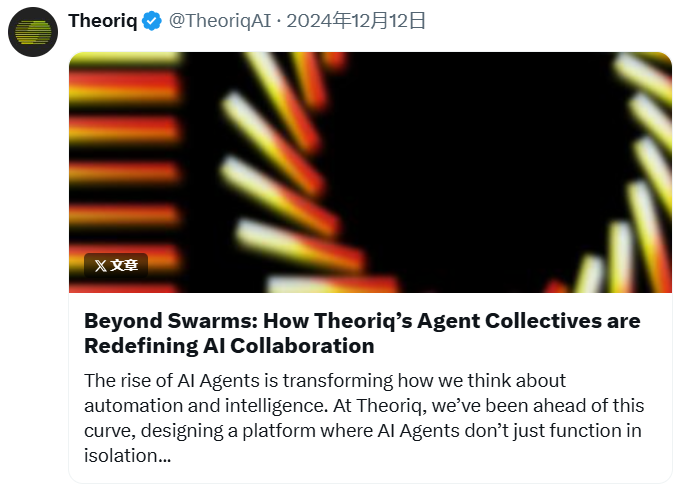
final thoughts
The narrative of AI applications that prioritizes practicality has just begun. Web3 has a unique opportunity to carve out a world where AI agents can not only entertain, but solve real problems, automate complex tasks, and create value for users. 2025 will witness a shift from chatbots to collaborative assistants, with specialized LLM and multi-agent orchestration redefining the perception of AI.
Although Web2 and Web3 will gradually merge, the open and collaborative nature of Web3 will lay the foundation for the most innovative breakthroughs. It’s no longer about “AI agents with personalities”, it’s now about agents that provide practical value and create meaningful impact. Of note are the agentive L1, coordination layer, and emerging AI applications. The age of agency has arrived, and this is just the beginning.



 chaincatcher
chaincatcher
 jinse
jinse